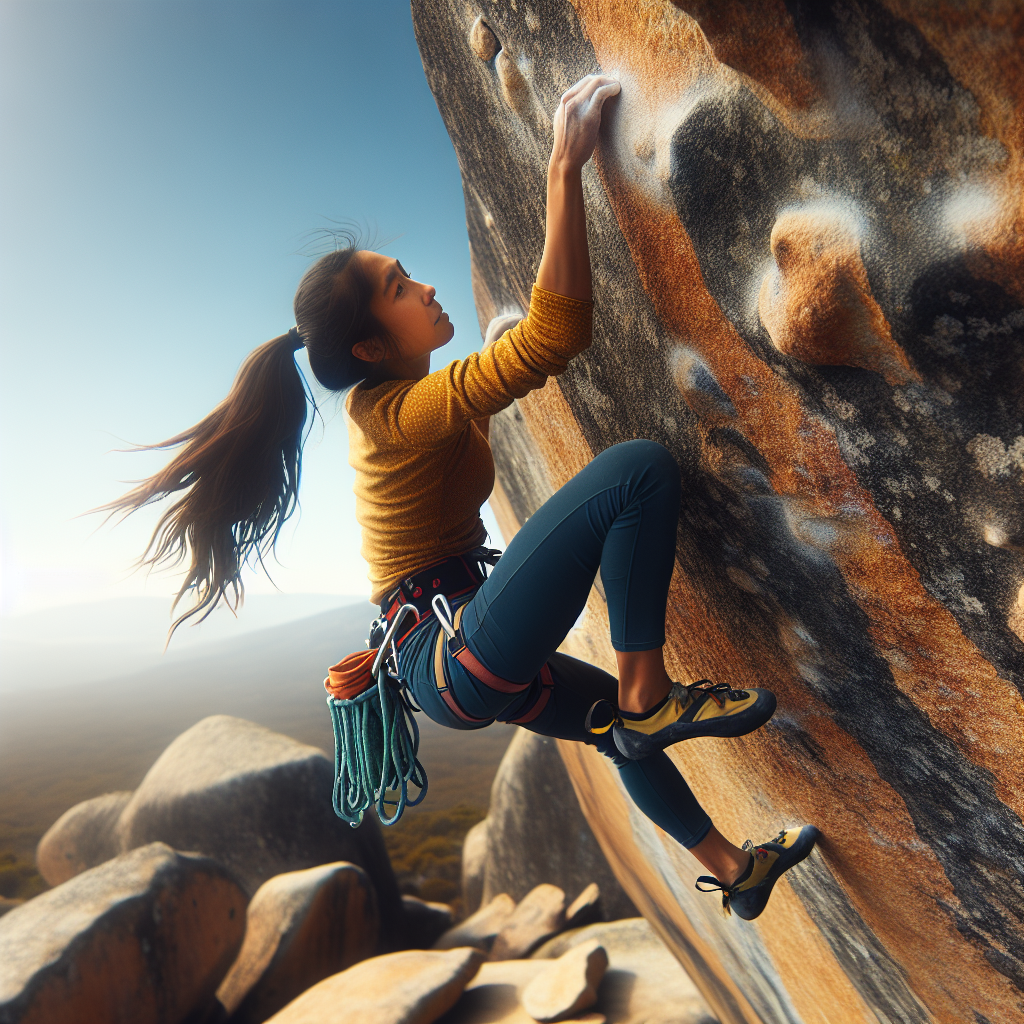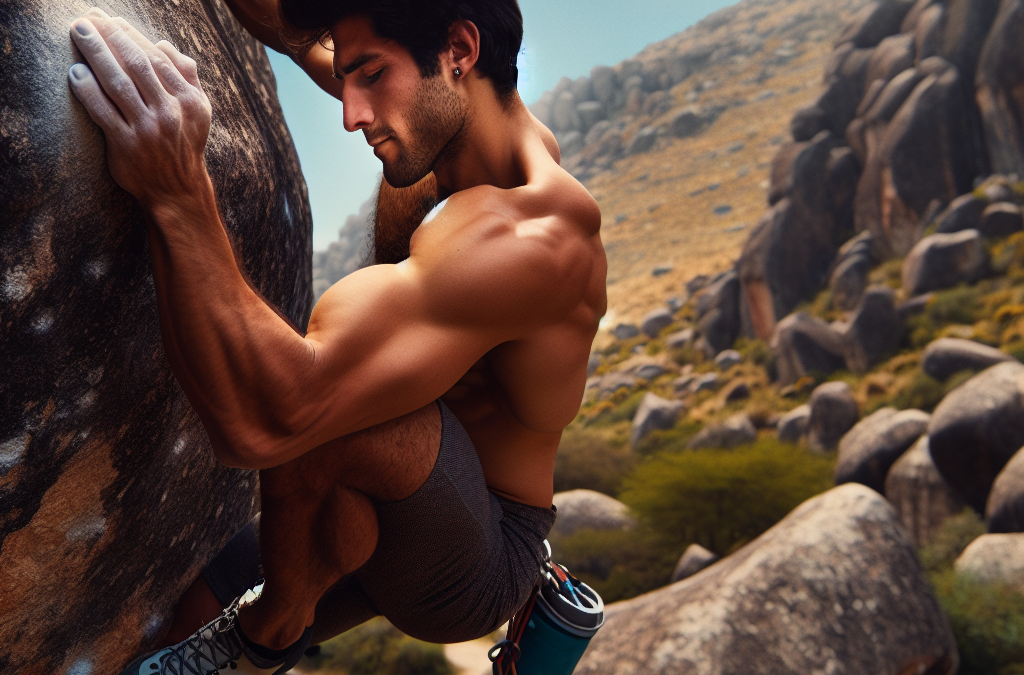Embarking on a new adventure is always exciting, isn’t it? Especially if it’s something as exhilarating as bouldering, a form of rock climbing that doesn’t require ropes or harnesses. This guide “Bouldering For Beginners: How To Get Started Without Ropes” aims to present you with the fundamental knowledge needed to launch into this popular outdoor sport. Your journey might start with hesitation and a bit of fear, but trust us, it will soon turn into an invigorating exploration of your own strength and determination. Rock on!
Understanding Bouldering
Welcome to the thrilling world of bouldering, a world full of energy and strength. It’s the place for people like you, who need some adrenaline in their life and want to challenge themselves. But first, you might wonder:
What is Bouldering?
Bouldering is a form of rock climbing, but not quite exactly rock climbing as you may know it. It is traditionally done without the use of ropes or harnesses, which may sound a bit scary, but it’s done at safe, low heights. It often involves climbing small rocks, or ‘boulders’, hence the name.
Differences between bouldering and rock climbing
While bouldering and rock climbing share many similarities, there are few key differences between the two. Rock climbing typically involves climbing larger formations and utilizes equipment like ropes and harnesses for safety. On the other hand, bouldering is done on smaller rocks or artificial structures and involves no ropes, hence, the challenges presented are often more intense over a shorter duration.
Why beginners might choose bouldering
Bouldering is a great starting point for beginners because it requires less equipment and technical skills compared to traditional rock climbing. And don’t worry, even though it’s less technical, it doesn’t mean it’s less fun or challenging! Plus, it’s an amazing way to build up your strength, endurance, and technique in a controlled environment before moving on to more complex forms of climbing.
Gearing Up for Bouldering
As for any sport, bouldering needs its equipment. Luckily, it doesn’t require as much as other climbing disciplines.
Necessary equipment for bouldering
The basic equipment list for bouldering includes climbing shoes, a bouldering mat (also known as a crash pad), and climbing chalk. These are the absolute essentials that you need to get started with bouldering.
Choosing the right shoes for bouldering
When it comes to bouldering, your shoes can make a significant difference. Shoes designed for bouldering are typically more aggressive – they are tighter, barely padded, and have a more pronounced curve known as ‘camber’. This will help your feet grip the rock better, particularly for climbing overhangs. Try on multiple pairs at a specialty store to intuitively understand the best fit for you.
Importance of a good bouldering mat
A good bouldering mat (or crash pad) is crucial as it provides protection when you inevitably fall. Look for ones with high-quality foam to protect your knees and ankles and ensure that it’s large enough to cover a decent landing area.
Using chalk for improved grip
Chalk is used to improve grip on the holds by absorbing sweat from your hands. It comes in various forms, but a chalk ball held within a small pouch is the most common for bouldering.

Safety Precautions
Bouldering can be risky, like any other sport, but with proper precautions and knowledge, it can be made significantly safer.
Understanding the risks of bouldering
These risks include falling from height, landing incorrectly, or straining muscles. Hence, like any other form of climbing, knowing the hazards upfront and taking appropriate precautions is advisable.
Safety measures to take when bouldering
First, always check the landing area for any objects that could cause injury. Move them out of the fall zone if necessary or find another area to climb. Next, always have a spotter, someone who can guide your fall onto the crash pad. Lastly, never climb beyond your limit, know when it’s time to descend.
How to fall safely
When falling, aim to land on your feet with slightly bent knees, then roll backwards to help distribute the impact across a wider area. Practice this in a controlled setting until it becomes instinct.
Injury prevention
Warming up properly before climbing and cooling down afterwards, maintaining good form, and progressively increasing the intensity of your workouts are all crucial steps in preventing injuries in bouldering.
Basic Bouldering Techniques
Like every sport, bouldering also has techniques that help optimize your performance.
Fundamental climbing moves
There are several basic climbing moves that are essential to bouldering, such as the mantle, where you push your body up onto a ledge, and the smear, where you make use of friction between your shoes and the rock.
Importance of grip techniques
Grip techniques like crimping, pinching and sloping, can all be utilized to conquer various holds. Each grip type uses different muscle groups and learning to use them properly can significantly improve your climbing technique.
Strategizing your route
Strategizing your climbing route can be the difference between a successful climb or falling short. Look for paths that suit your strengths and take the time to plan your climb before you start.
Building strength and flexibility
Strength is a key factor in bouldering. Incorporate strength training, specifically upper body and core, into your workout routine. Additionally, flexibility can greatly improve your reach and mobility on the wall, so never neglect a good stretch.

Understanding Climbing Grades and Ratings
Bouldering routes, called problems, come in varied difficulties, which are represented by grades.
What are bouldering grades
Bouldering grades are a system used to denote the difficulty of a bouldering problem. Different regions often use different grading systems.
Interpreting different grading systems
The two main grading systems are the V system (originating from the US) and the Font system (originally from France). Lower numbers in each system denote easier climbs while higher ones represent more challenging problems.
Choosing the right level for beginners
As a beginner, start with the lower grades, learn the basics, improve your strength and technique before slowly making your way up the scale. Script diving straight into tough problems can result in injury and frustration.
Finding a Place to Boulder
Choosing the right environment to boulder is as important as choosing the right gear.
Indoor bouldering facilities vs outdoor bouldering sites
Indoor facilities offer a controlled environment that’s perfect for beginners to understand the ropes without any external variables. However, outdoor bouldering brings a layer of unpredictability that can be both challenging and exhilarating.
Recommended beginners’ bouldering sites
Beginners should stick to bouldering spots that are known for being beginner-friendly. These spots generally have less steep rocks, and the routes are relatively easier to climb.
Etiquette at bouldering sites
Respect others, the rules of the climbing site, and the environment are essential aspects of bouldering etiquette. Aim to leave no trace of your visit and always be considerate towards other climbers.
Training for Bouldering
Bouldering is a sport that requires both physical fitness and mental preparation.
Types of exercises beneficial for bouldering
Strength training, particularly in the hands, arms, shoulders, and core, can greatly improve climbing performance. Cardiovascular conditioning is also important for endurance.
Cross-training suggestions
Include other sports like swimming, yoga, or running into your training regime. These activities add variety, balance muscle development and can prevent burnout.
Balance and flexibility work
Enhancing balance through exercises like yoga or tai chi can greatly improve bouldering performance. Likewise, regular stretching can improve flexibility and range of motion, both essential for climbing.
Mental preparation
Bouldering can be as much of a mental challenge as a physical one. Meditation or visualization exercises can help reduce anxiety, focus your mind, and improve your overall performance.
Bouldering Community
Finding and joining a climbing community can provide you with invaluable support, knowledge, and motivation.
Importance of finding a climbing partner or group
Whether you’re bouldering indoors or outdoors, having a partner or group can make your experience more enjoyable and safer. Plus, there’s always something to learn from other climbers.
Sportsmanship and etiquette among boulderers
Always show respect and courtesy to fellow climbers. Acknowledge their right to climb routes without interference and always show sportsmanship, whether you’re observing or climbing.
Bouldering clubs and organizations
Joining local bouldering clubs or organizations is a great way to meet other climbers, learn from more experienced members, and find out about events or competitions.
Overcoming Challenges in Bouldering
In your bouldering journey, you’ll undoubtedly face challenges, but it’s overcoming these that will make you a better climber.
Common challenges for beginners
Tackling a wall for the first time can be quite a challenge for beginners. But remember, strength and technique come with practice, so never get discouraged.
Techniques for overcoming fear of heights
It’s natural to be afraid of heights, especially when starting out. Start by climbing lower heights and gradually push your boundaries as you gain confidence.
Dealing with frustrations and plateaus
Every climber faces plateaus, moments when no matter how much you climb, it seems like no progress is being made. When this happens, consider taking a break, mixing up your training routine or focusing on other aspects like your mental game.
Progressing in Bouldering
Bouldering isn’t just about reaching the top of the wall; it’s about progress and self-improvement.
Setting and achieving bouldering goals
Having clear, realistic goals and a plan to achieve them is key to progress. Climb a higher route, master a tricky move, or go bouldering more often.
Moving from beginner level to intermediate and advanced
Don’t rush. Moving up levels requires improvement in strength, technique, and confidence. Listen to your body and only start climbing higher and tougher routes when you feel ready.
Competitive bouldering
If you’ve developed a love for the sport and want to challenge yourself further, bouldering competitions are a great idea. They can be a fun way to test your skills and meet other climbers.
Maintaining motivation and passion for the sport
Remember why you started bouldering and try to maintain that passion and enthusiasm. Join a community, take part in events, and remember to enjoy yourself. After all, bouldering isn’t just a sport- it’s a way of life! Keep exploring, keep climbing, and most importantly, stay safe.

